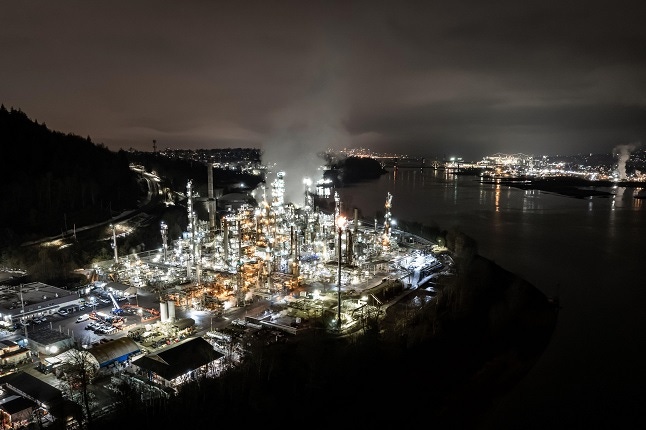Greening the Energy Sector Requires Data Transformation
There’s a missing element the energy sector needs to accurately measure and confirm the progress of its transformation: reliable, complete emissions data at scale.

As the world works toward net-zero carbon emissions goals, energy is the sector with the most potential to make huge improvements. Although power plant carbon emissions dropped by 28% from 2011 through 2020, fossil-fueled power generation remains the biggest global source of CO2 emissions.
With the incentives in the Inflation Reduction Act of 2022, there’s more momentum than ever for clean energy transformation. However, there’s a missing element the energy sector needs to accurately measure and confirm the progress of its transformation: reliable, complete emissions data at scale.
We’re increasingly seeing carbon emissions quantified for everything from the lumber that frames our homes to the flights we take and the clothes we wear. However, calculating accurate, complete carbon footprints for energy and power production is even more complicated than the calculations required for many other sectors.
The slightly longer answer is that energy and utility facilities have unique needs that require new solutions for measuring C02 emissions, standardizing and extrapolating emissions data, and building an emissions data network that reaches across the sector for more accurate emissions tracking and reporting at scale. This need represents a major opportunity for data-centric technology companies, as well as for OEMs, utilities, and their suppliers to help the energy industry accurately track its progress toward its sustainability goals.
Fragmented Data and Platforms Limit Visibility on Emissions
Currently, energy sector companies have difficulty quantifying their entire footprint, for multiple reasons. Often, we see top-level corporate goals but few incentives for plant-level operations to comply with data collection and reporting. Plant equipment often lacks OEM or aftermarket data sensors. When data is available, much of it lives in silos -- spreadsheets or one of the dozens of carbon tracking software solutions on the market. Even if a team is ready to unify their siloed data, there typically isn't easy access to a common taxonomy and platform to bring it all together.
Now, as the urgency of Net Zero and the pool of incentives for improvements increase, energy and utility companies want greater visibility and accuracy. A typical power company needs asset-level, plant-level, and portfolio-level carbon footprint data, so they can assess their current emissions more accurately. They need that visibility to determine their reduction goals, and then plan to reach them. Another challenge is the complexity of energy and utility assets. For example, each power plant may have hundreds or thousands of different machines, each with its own process to produce power, and each one produces different amounts of carbon.
Because facilities hold onto capital equipment for as long as possible -- years or decades -- many of their assets don’t have emissions sensor technology built in. In many cases even the original equipment manufacturer lacks emissions data for specific pieces of equipment. At the same time utilities face this kind of difficulty, they also are highly focused on transitioning to cleaner energy sources. The incentives exist to support that transition, so data upgrades have been a lower priority.
Building an Energy Sector Carbon Data Ecosystem
Now, the energy sector needs that information for a clearer benchmark of today’s emissions and better tracking of their emissions reduction progress. Because of the complexities involved, there’s no silver-bullet solution. Instead, many organizations will need to attack the problem piece by piece, from the edge to core operations, across generation, fleets, supply chain, and more.
OEMs have an opportunity to evolve to support emissions tracking and build up their own databases of equipment carbon footprints. Some of the larger OEMs have begun calculating carbon footprints for assets like turbines as they come off the line. This allows utilities to know the output for that asset and helps them to extrapolate to similar pieces of equipment, which is a stopgap improvement until all equipment in use has its own emissions data. Industrial IoT technology developments also have the potential to add visibility through sensors built into advanced assets.
More equipment, fleet, travel, and other emissions data can feed into platforms for analysis. However, while there are many industry-agnostic platforms on the market, there are only a few designed for energy and utilities, and they require solving for each asset as they’re added. There is an opportunity for data technology companies and/or OEMs to find a way to standardize data collection across a complex ecosystem and to build carbon accounting into their processes and products.
Once the right data is accurately gathered, tracked, and reported, the next big challenge is developing roadmaps and scenario reduction plans that can balance a set of actions against the dual axes of carbon reduction and business value. That’s where the true magic happens: reduced carbon footprint and increased business value. Developing accurate and actionable scenarios is no easy feat but will be the next evolution in the space.
About the Author(s)
You May Also Like









